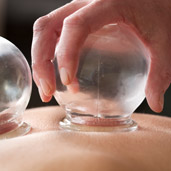
Acupuncture
About Acupuncture
 An ideal adjunct to chiropractic care, acupuncture is used to correct health problems that seem to be caused by disruption to energy pathways in your body called meridians. This centuries-old healing procedure focuses on the integrity of bodily systems.
An ideal adjunct to chiropractic care, acupuncture is used to correct health problems that seem to be caused by disruption to energy pathways in your body called meridians. This centuries-old healing procedure focuses on the integrity of bodily systems.
Many Medical Doctors and Chiropractors who practice acupuncture are not Licensed Acupuncturists, and are only required to obtain between 50-150 hours of training in the technical use of acupuncture prior to using it as a treatment. Currently, the state of California requires a minimum of 3,200 hours of education and clinical training prior to sitting for the California Acupuncture License Exam. Licensed Acupuncturist's also practice internal Chinese medicine, which focuses on the underlying cause of a problem rather than just treating symptoms. As a result, their treatments go beyond simple pain relief offered by most chiropractors and medical acupuncturists.
Choosing an acupuncturist can be an overwhelming experience for some people, but it doesn't have to be if you know what to look for. Ideally, asking friends and family for a recommendation is the best way, though this is not always possible. It's important to know if they are a licensed acupuncturist, or a board certified acupuncturist.
Licensed Acupuncturists must also have a Masters degree in either Acupuncture or Oriental Medicine. The distinction between the two is that a practitioner with a Masters in Acupuncture is trained primarily in acupuncture. A practitioner with a Masters in Oriental Medicine is trained both in acupuncture and in traditional Chinese herbal medicine.
What About the Needles?
The most common question we get is about the needles we use. Most people have encountered hypodermic needles and sewing needles. Both types are gigantic compared to the ones we use. In fact, five of our needles could easily fit inside a hypodermic needle!
Feels Great
When we first insert these ultra-fine, sterile needles at special energy points on your body, most people report a small prick, like a mosquito bite. Then the sensation passes quickly.
How Does it Work? (layman terms)
Perhaps the best way to think about acupuncture is to imagine rivers of energy throughout your body, organized by meridian similar to neurological pathways. These meridians can experience a "log jam" and energy flow is restricted. The needles help loosen the log jam and allow energy to circulate properly.
What to expect
Acupuncture visits can take up to 30 minutes, but usually the session is 45-50 minutes. Most people experience a variety of post-session feelings, which range from energized to a deep sense of relaxation and well-being.
NON NEEDLE TECHNIQUES
Moxibustion - a therapeutic application of indirect heat supplied by burning the herb, Mugwort, over a single or group of acupuncture points. It is indicated for conditions that would benefit from heat, such as cold arthritic conditions, cold hands, feet, lower back, menstrual irregularities, old injuries, atrophied muscles, organ prolapsed, prolonged diarrhea, obstruction in the musculoskeletal system and acupuncture channels, turning around a breeched baby, and overall for preventing diseases and keeping healthy.
Cupping - a therapeutic approach that utilizes round suction cups over a large muscular area such as the back to enhance blood circulation to the designated area. It is indicated for promoting free flow of blood and energy to the acupuncture channels, dispelling cold arthritic conditions, and diminishing local swellings and fixed pain.
It has also been shown to increase the production of white blood cells. Research has shown that the white cell count rises immediately after application of moxibustion and remains elevated for days afterwards. The production of red blood cells and hemoglobin increases after moxibustion as well. Experiments show improvement in blood and lymph circulation after treatment. Due to those biochemical changes moxibustion is effective for internal chronic ailments.
Gua Sha - a therapeutic treatment involving repeated pressure strokes over lubricated skin with a smooth edge, like a ceramic Chinese soup spoon or honed animal bones or well-worn coin to promote blood and energy circulation. It is indicated for headaches, muscle and tendon injuries, cough and other respiratory conditions like asthma and bronchitis, stiffness, pain, immobility, and digestive, urinary and gynecological disorders.
